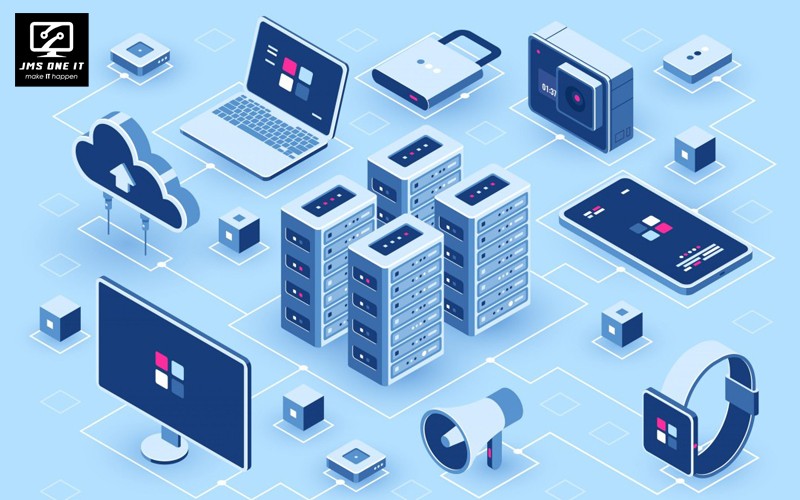IT infrastructure services encompass all the hardware, software, network, and other components that enable an organization to operate and function effectively in the digital world. Think of it as the backbone of your technological operations, supporting everything from day-to-day tasks to critical business processes.
Here's a breakdown of key elements within our IT infrastructure services:
1. Hardware:
Servers: These are the central processing units that store and manage data, run applications, and provide access to network resources.
Storage Systems: These systems store data, ensuring its availability and integrity. This includes hard drives, solid-state drives, and cloud storage solutions.
Networking Devices: Routers, switches, firewalls, and other networking equipment connect devices and enable communication within and outside the organization.
Workstations and Mobile Devices: These are the computers, laptops, tablets, and smartphones used by employees to access and utilize the IT infrastructure.
2. Software:
Operating Systems: These software programs manage the hardware resources of a computer system, providing a platform for other applications to run.
Applications: These software programs are used for specific tasks, such as email, accounting, customer relationship management (CRM), and productivity tools.
Databases: These systems store and manage large amounts of organized data, enabling efficient retrieval and analysis.
3. Network:
Network Connectivity: This encompasses physical cables, wireless connections, and other infrastructure that enables communication between devices and systems.
Network Security: Firewalls, intrusion detection systems, and other security measures protect the network from unauthorized access and cyber threats.
Network Management: Monitoring and maintaining network performance, ensuring availability, and resolving any issues that arise.
4. Data Center:
Physical Facilities: These are secure locations that house servers, storage systems, and other IT equipment.
Power and Cooling Systems: These ensure reliable power supply and temperature control to maintain optimal performance of IT equipment.
Security and Monitoring: Data centers employ physical security measures and monitoring systems to protect against unauthorized access and ensure the safety of IT assets.
5. Cloud Services:
Infrastructure as a Service (IaaS): Provides access to virtualized computing resources, such as servers, storage, and networking, on a pay-as-you-go basis.
Platform as a Service (PaaS): Offers a platform for developing and deploying applications, including tools, frameworks, and databases.
Software as a Service (SaaS): Delivers software applications over the internet, eliminating the need for local installation and maintenance.
IT infrastructure services encompass a wide range of capabilities, ensuring that organizations have the necessary technology to function effectively and achieve their business objectives.
Key Benefits of Robust IT Infrastructure Services:
Improved Efficiency and Productivity: Streamlined workflows, faster access to information, and enhanced communication.
Enhanced Security: Protection against data breaches, cyberattacks, and other security threats.
Increased Reliability and Availability: Minimal downtime, ensuring continuous operations and access to critical systems.
Scalability and Flexibility: Ability to adapt to changing business needs and growth.
Cost Optimization: Efficient resource utilization and reduced IT expenses.
By investing in comprehensive IT infrastructure services, companies can gain a competitive advantage, drive innovation, and achieve their strategic goals.

